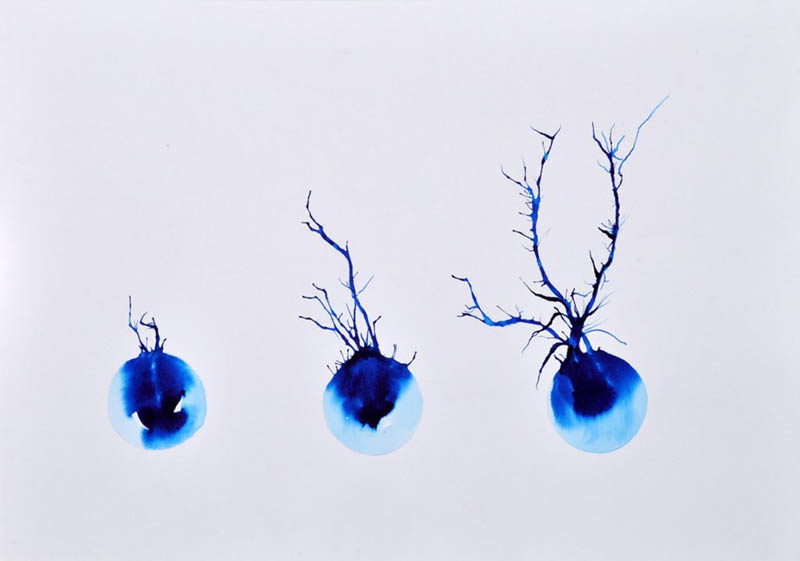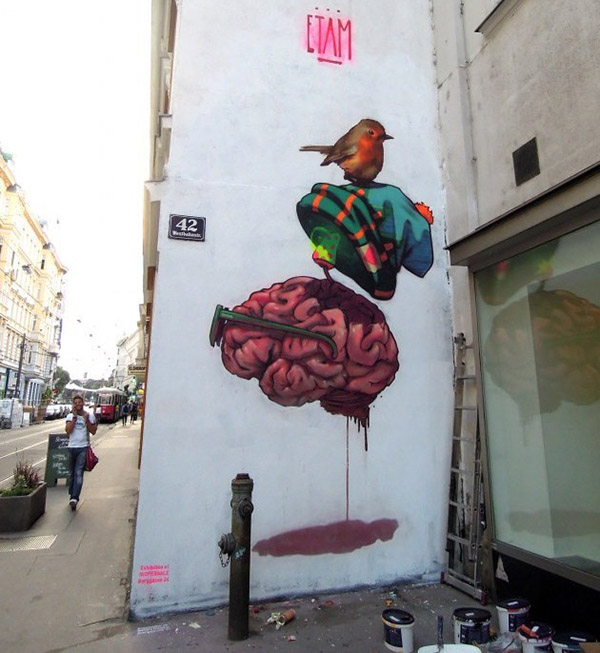Neuroscience
The brain is a wild and wonderful thing. Even in a damaged, broken, or diseased state, it performs wonders. Oliver Sacks, neurologist and prolific writer, knew this and he wrote a series of books that documented the inner machinations of injured minds. These are detailed clinical studies of patients, documenting the unusual and often unimaginable. Many of these conditions are extraordinarily rare, drawn from only one or two documented cases. Oliver Sacks collected these clinical case studies, presenting them to his readers like some sort of text-based museum of the absurd. Almost ethnographic stories.

‘Neurone development, artwork’ by Stephen Magrath. Photo credit: Stephen Magrath. CC0
Many of his patient accounts are studies in imagination, delusion, sensory, and memory – a ‘frenzied confabulatory delirium’ (Sacks 1998: 109), ‘kaleidoscopic mutations’ (108), ‘sensory ghosts’ (66), and an 88-year-old woman living with neuro-syphilis who preferred the state of ‘mania’ (103). His stories speak of the visceral of the injured mind – sensitivities, time slippage, pain, loss, confusion – even in cases where the fundamental issue is the loss of the embodied self (in the case of The Disembodied Lady) (Sacks 1998).
His stories, and the stories of others who experience neurological conditions that I am currently collecting as part of a new ethnographic study, seem to escape language (Elliott 2014). Memory vicissitudes, epileptic microseizures, and subtle sensorial changes (loss, distortion, reactive, phantom) are often undetectable except by those living with the experiences. We can recount with precise detail but for those who live with them, the “reality is always suffused with something more, some other face, some other dimension, something intangible, evanescent” (Pandian and McLean 2017: 19). Abstract, convoluted, confusing, inexplicable.
Fugitive memories.
Abstract visions.
Frenzied deliriums.
These often confused inner worlds demand novel experiments that extend beyond the written word.
An injured mind:
Flashing, feverish colours.
Muted soundscapes.
Impenetrable darkness.
Why Art?
Andrew Irving has suggested that, “When the expressive capacity of words is compromised, there is … the possibility of action, including that of making art” (2017: 112). As I think about these states of being, this inner transforming world of the neurological, I envision multimedia installations inspired by experimental film, performance art, and ethnographic writing as a way to reveal that which seems unspeakable, almost unknowable. At the nexus of art, multimedia, science and anthropology we find that sweet spot. A multisensorial atelier that invites our audiences to see/hear/feel that which cannot be said. I want to get at that which escapes conventional neurosciences and the written word of anthropology.

Mind Trip, Vienna Austria, 2012 by ETAM. Photo credit: ETAM.
I am spending my research hours now exploring arts-based representations of injured minds, brain injuries, and disordered memories. Films, performances, spoken word, creative nonfiction, memoir, drawings, paintings, sculptures, rock art, graffiti, music videos, choreography, animations. I am collaborating with some of these artists to explore how we might conduct an ethnography of traumatic brain injuries if we imagine ethnography as a theoretically informed arts practice, guided by imaginative and aesthetic experimentation in both research and representation?
I am particularly inspired by Lotje Sodderland’s My Beautiful Broken Brain and Shannon Yee’s brilliant experimental performance Reassembled, Slightly Askew. Although Sacks’ accounts are beautifully written, attentive to the fine detail of neurological interiors, they cannot duplicate the interior experience of the mind in the way that Sodderland or Yee do through the use of transmedia, visuals and sounds. These artworks (a documentary and an experimental audio voyage) make visible/audible that which few of us will ever know – the inner dialogue, hallucinatory noise, and disordered thoughts of the injured mind. They explore matter, medicine, scientific practice, and embodiment in connection with an engaged theoretical analysis that position scientific epistemologies within their ethical, moral and political landscapes.
I admit I have artist envy. I cannot claim expertise in film, art, soundscapes, or performance, but there are brilliant examples emerging of transdisciplinary work that encompasses the aesthetics of art creation and the socio-political critiques of social theory and anthropology. For instance: Max Liboiron, artist-scholar interested in waste, pollution, and marine science. Interdisciplinary artist-scholar Lydia Nakashima Degarrod whose research and art explores dreams, exile, and social justice. Lina Dib, anthropologist and media artist, whose work explores temporality, ecology, and other socio-technics through experimental art and ethnographic installations. And of course, the work of Ethnographic Terminalia (including Trudi Smith, Kate Hennessy, Craig Campbell, and Fiona McDonald) who have pushed the boundaries of art/anthropology (and sometimes the study of science/technology) through multimedia, ethnographic installations.
Scientists too are embracing artistic fields and collaborative encounters. For instance, SymbioticA at the University of Western Australia, the ARTSCI collective at UCLA, and metaPhorest at Waseda University where artists are invited to work alongside of scientists in the laboratory. Brilliant hybrid scientific / artistic experiments that account for the microscopic detail hidden in the life sciences – sometimes referred to as bioart, transgenic art, and molecular music.
What are the possibilities if we also include scientists in our collaborative ethnographic creative projects – art, neuroscience, ethnography in one? I predict that we will see more and more collaborations between artists, anthropologists, and scientists, and anthropologists exploring training in arts, as we seek out new methods of research and representation in our attempts to offer deeper, more visceral accounts of science, medicine and technology (and those clinical accounts that Oliver Sacks writes about). Those altered states of being, our dreams, delusions, hallucinations as our synapses and neurons fire, misfire, or slowly disintegrate. I’m looking forward to these new collaborations in art, anthropology and science.
References
Elliott, Denielle 2014 Affective Science, or the Sad Brain, Imaginings, Centre for Imaginative Ethnography.
Irving, Andrew 2017 The Art of Life and Death: Radical Aesthetics and Ethnographic Practice. Chicago: HAU Books.
Pandian, Anand and Stuart McLean, eds. 2017 Introduction: Archipelagos, A Voyage in Writing. In Crumpled Paper Boat: Experiments in Ethnographic Writing. Durham: Duke University Press.
Sacks, Oliver 1998 The Man Who Mistook His Wife for a Hat: And other clinical tales. New York: Simon and Schuster.
